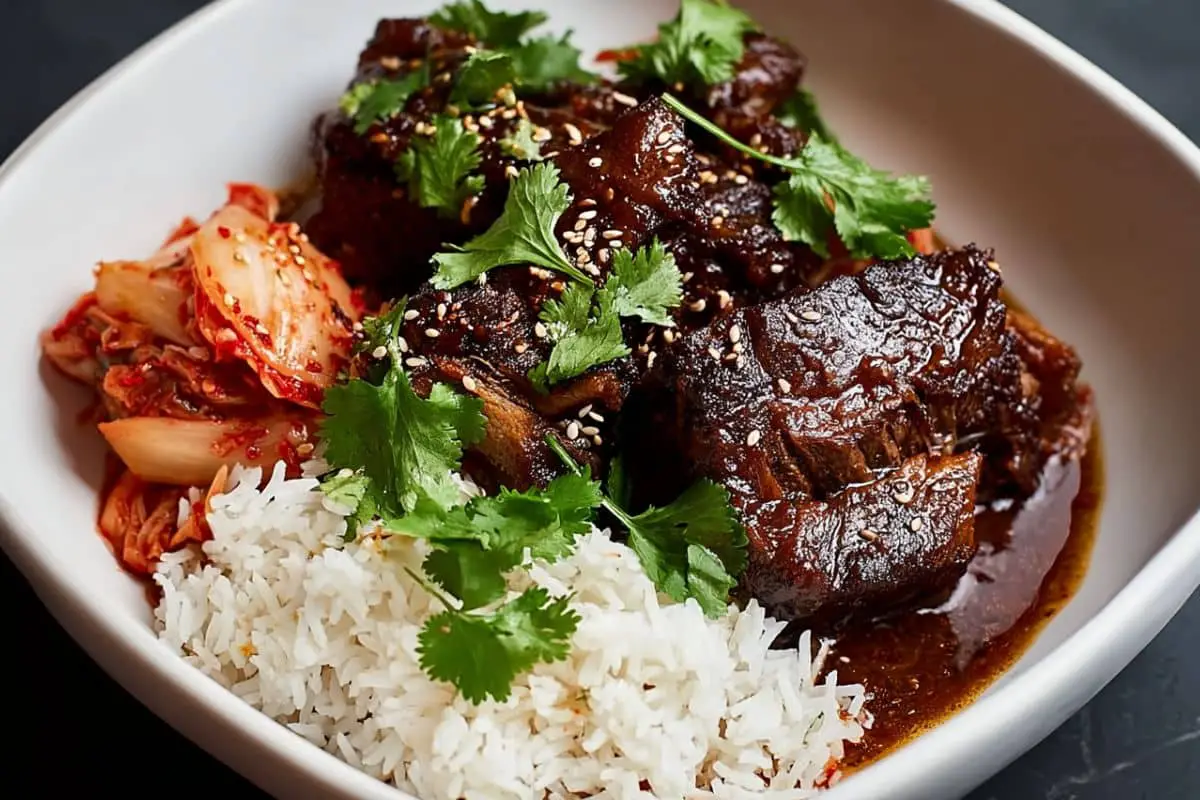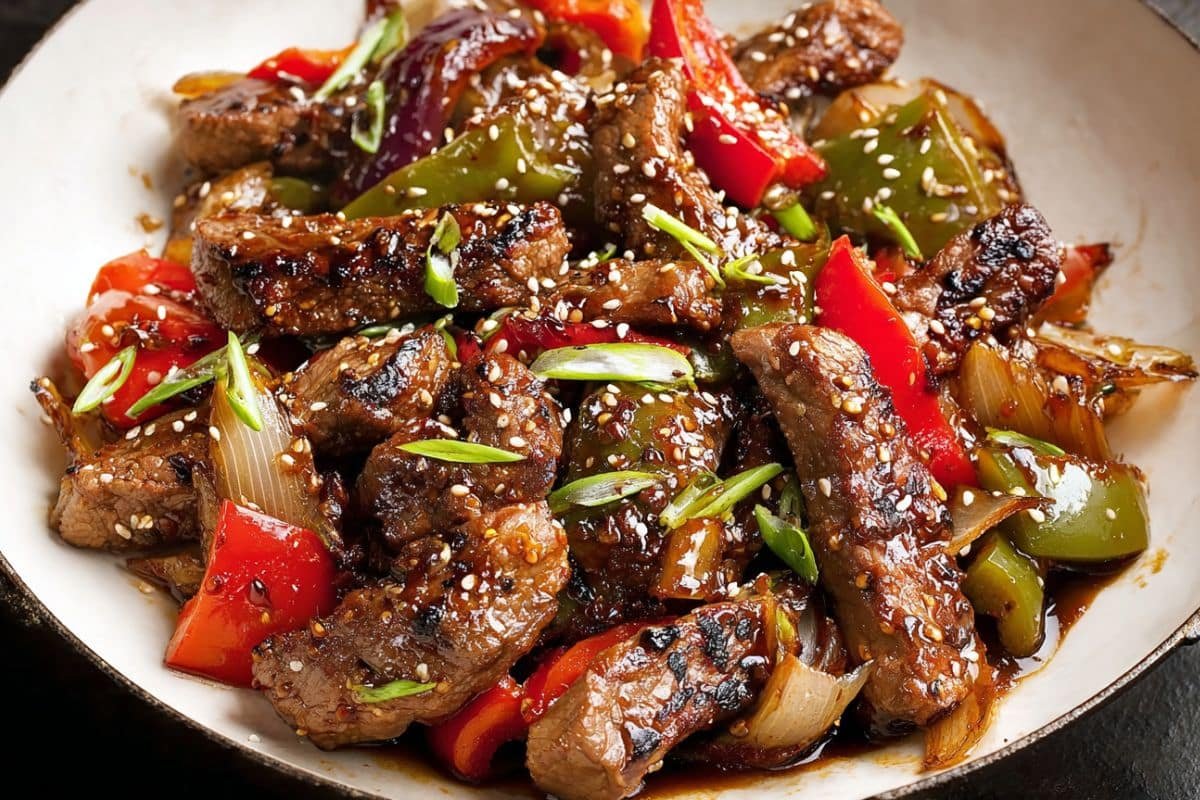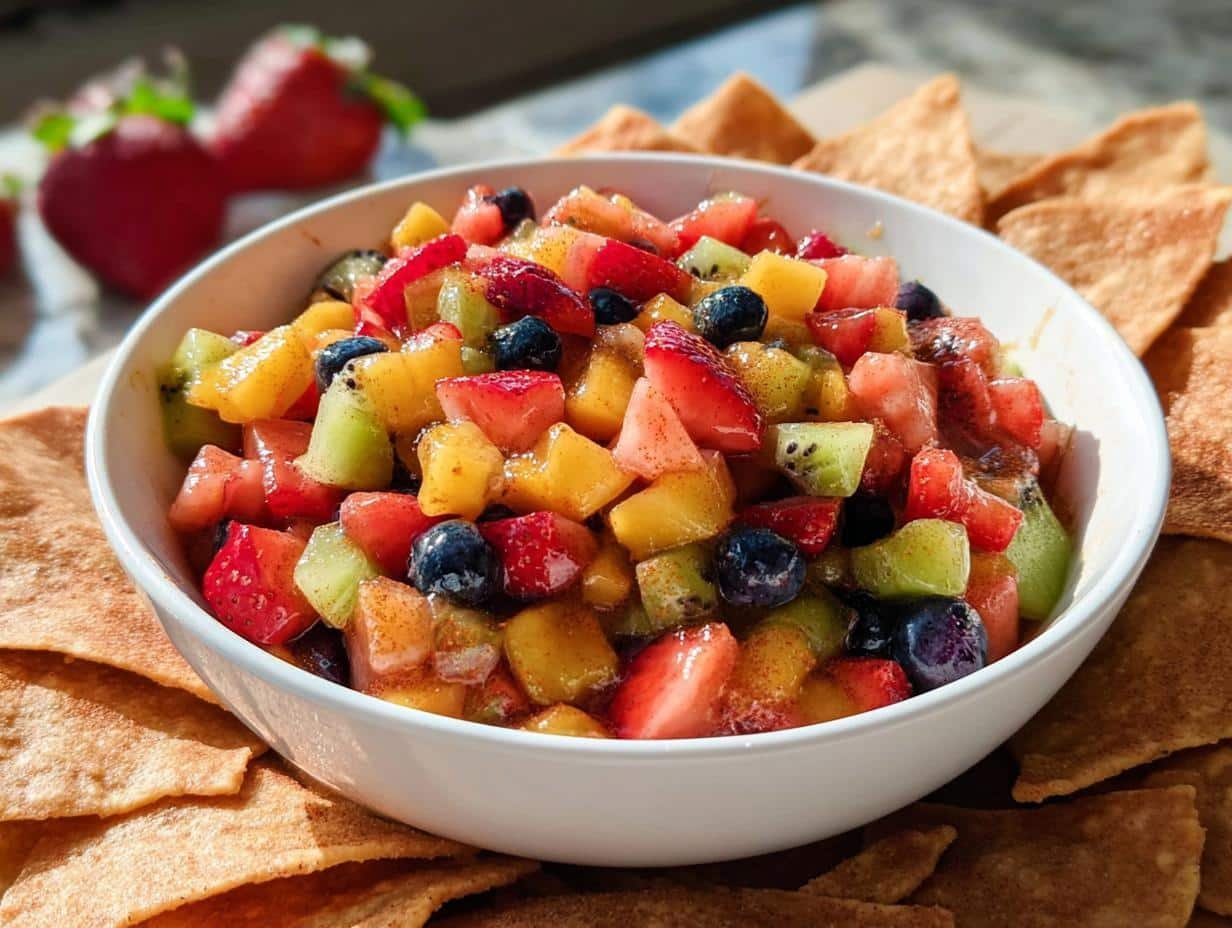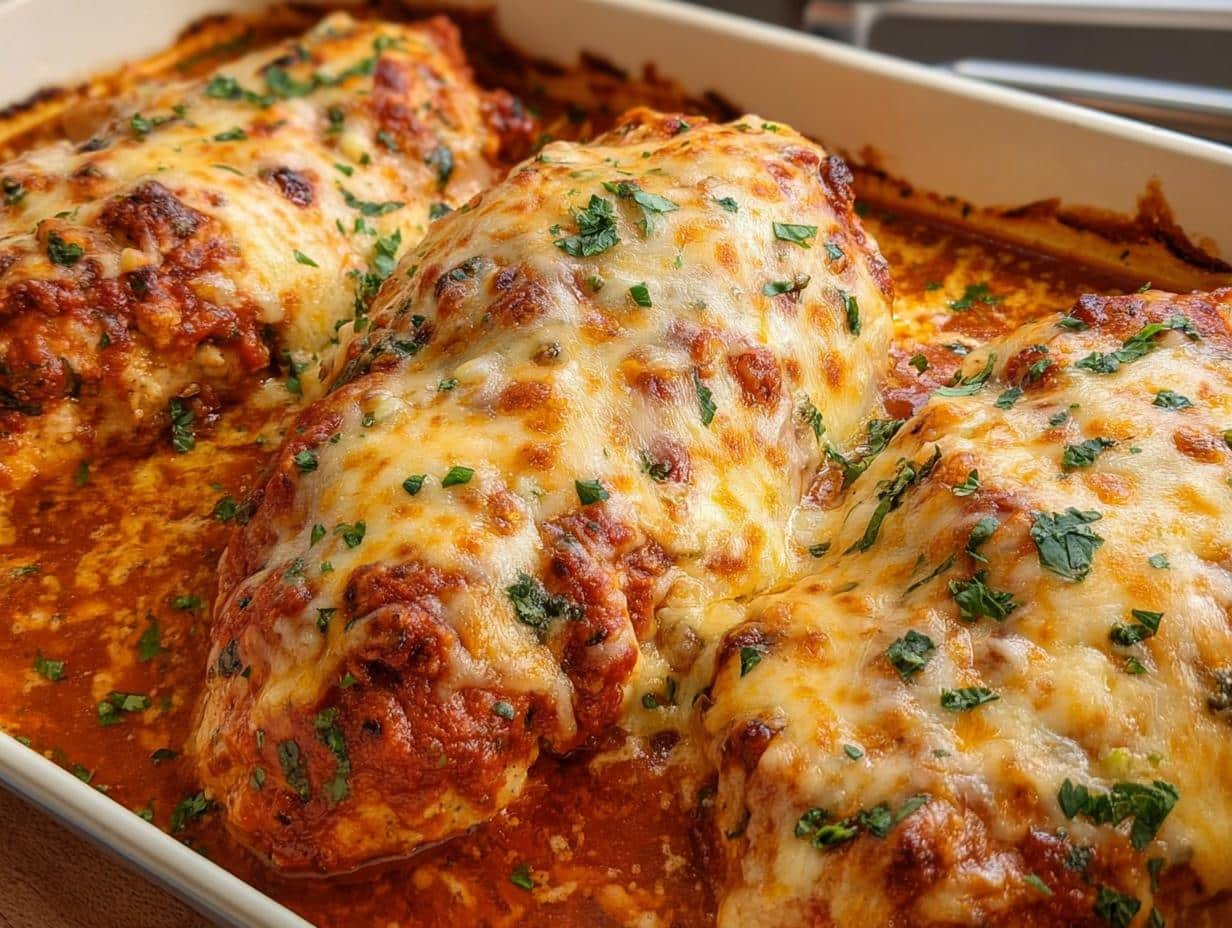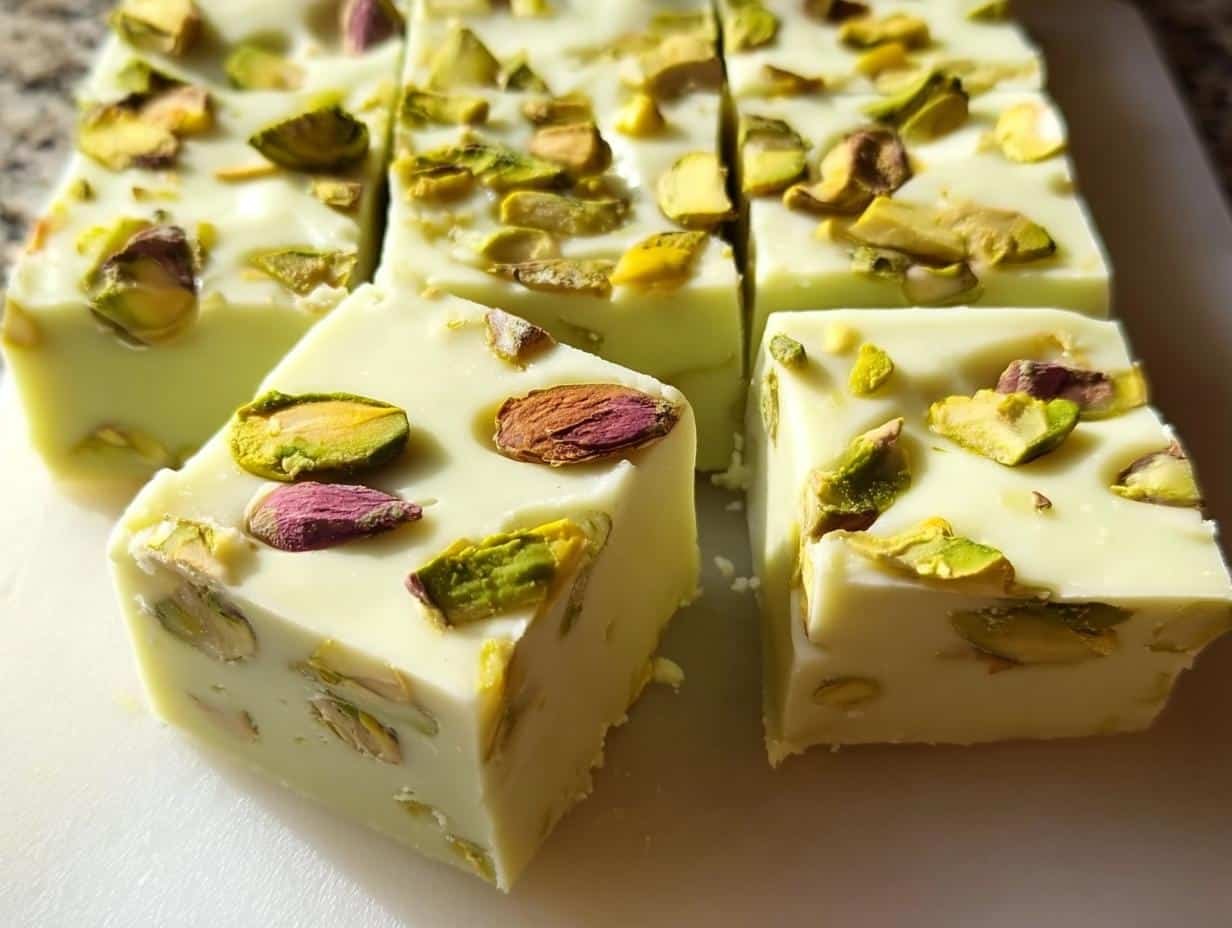Korean Style Pot Roast is a bold and comforting twist on the classic roast dinner. By combining tender chuck roast with the spicy‑sweet notes of gochujang, soy sauce, garlic and ginger, you’ll get a dish that brims with umami and warmth. This recipe delivers the kind of deep‑flavoured, slow‑cooked beef that makes meal time something to savour — ideal for a cozy evening when you want more than a basic roast.
Why You’ll Love This Recipe
You’ll love this Korean Style Pot Roast because it takes a familiar comfort food — the pot roast — and elevates it with Korean‑inspired flavours. The chuck roast becomes fall‑apart tender and the gochujang paste adds a subtle heat and richness. With simple ingredients and flexible cooking methods (oven, slow cooker or Instant Pot), it suits a range of weeknight or weekend plans. Best of all: you’ll end up with juicy beef, a flavour‑packed sauce, and easy sides like rice and kimchi that bring everything together.
Ingredients
-
1 (4 to 5‑pound) chuck roast, cut into 3‑inch pieces
-
1 tablespoon kosher salt
-
1 tablespoon vegetable oil
-
1 sweet onion, thinly sliced
-
6 garlic cloves, finely chopped
-
1 tablespoon grated fresh ginger
-
2 tablespoons gochujang paste
-
¼ cup brown sugar
-
½ cup low‑sodium soy sauce or tamari
-
2 cups beef stock
-
Cooked rice, for serving
-
Fresh cilantro, for serving
-
Kimchi, for serving
Step‑by‑Step: How to Make Korean Style Pot Roast
Oven method:
-
Dry the beef thoroughly with paper towels, then season it evenly with kosher salt.
-
Heat the oil in a large Dutch oven over medium‑high heat. Once the oil is shimmering, working in batches, add the beef and brown all over (about 10 minutes). Transfer the browned meat to a plate.
-
Reduce the heat to medium. Add the onions to the Dutch oven and cook, stirring occasionally, until they begin to soften (about 4 minutes). Add the garlic and ginger and cook, stirring, until fragrant (about 1 minute). If the aromatics begin to brown too quickly, add ¼ cup of the beef stock and use a spatula to scrape up the browned bits. Then stir in the gochujang paste, brown sugar, and soy sauce until combined.
-
Return the beef (and any collected juices) to the Dutch oven. Add the remaining beef stock and bring the mixture to a simmer. Let it reduce slightly (about 5 minutes). Cover the pot and transfer it to the oven. Cook for approximately 2 hours, or until the meat is very tender and shreds easily with a fork.
-
Serve family‑style over cooked rice, topped with fresh cilantro and a side of kimchi.
Slow cooker method:
-
Dry the beef thoroughly with paper towels, then season it evenly with kosher salt. Brown the beef in oil in a Dutch oven (as above) for about 10 minutes, then transfer to the slow cooker.
-
In the Dutch oven, sauté onions (4 minutes) then garlic and ginger (1 minute). Add ¼ cup beef stock to deglaze if needed. Transfer that onion‑garlic‑ginger mixture to the slow cooker. Stir in gochujang, brown sugar, soy sauce, and remaining beef stock.
-
Cover and cook on HIGH for 6 hours or LOW for 8‑9 hours, or until the beef shreds easily.
-
Serve with rice, cilantro, and kimchi.
Instant Pot (pressure cooker) method:
-
Dry the beef thoroughly with paper towels, then season it evenly with kosher salt. Select Sauté mode on the Instant Pot and add oil. Once hot, brown the beef (10‑20 minutes), then transfer to a plate.
-
Add onions to the pot and cook ~4 minutes, then garlic and ginger ~1 minute. Stir in gochujang, brown sugar, soy sauce and beef stock. Return the meat (and any juices) to the pot.
-
Lock the lid, close vent, and Pressure Cook for 1 hour. Allow natural pressure release for 15 minutes, then quick release if needed.
-
Serve as above.
Helpful Tips
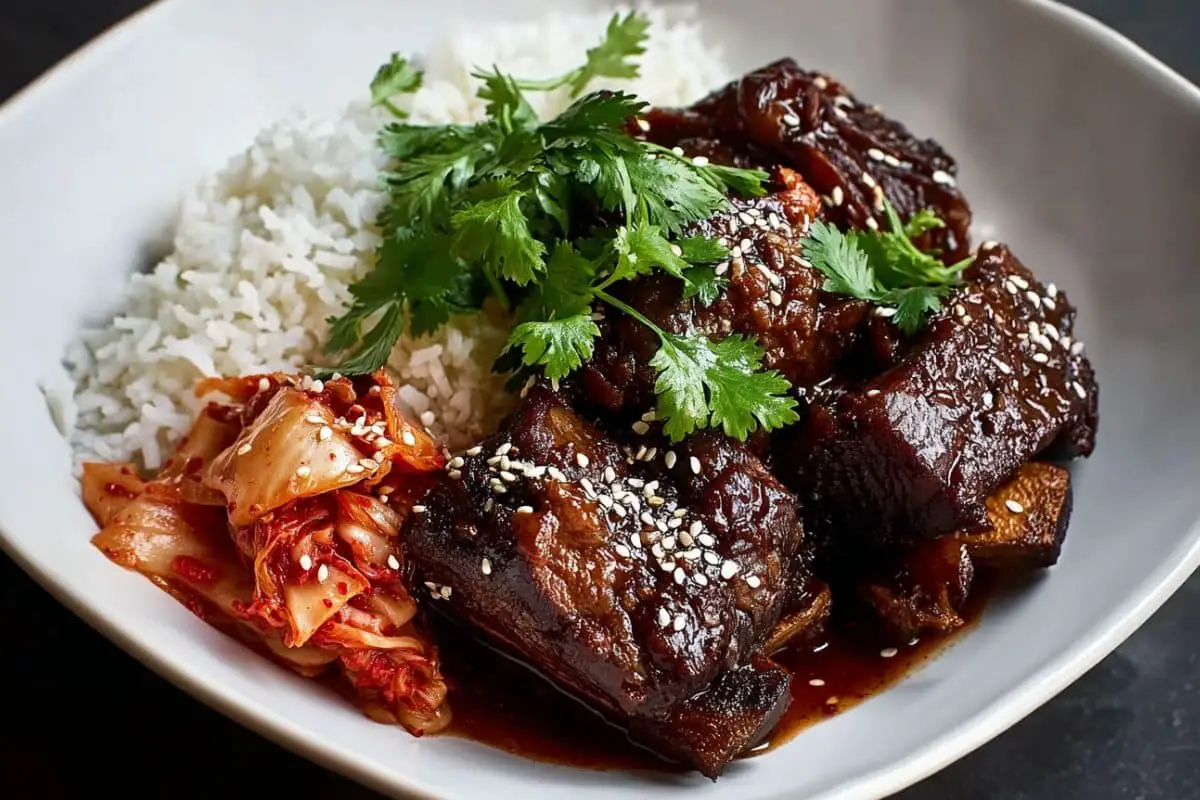
-
Brown the meat: Searing the chuck roast pieces before slow‑cooking adds a layer of flavour (Maillard reaction) and texture that enhances the end result.
-
Choose the right cut: A chuck roast works beautifully because it has good marbling and connective tissue that melts when cooked low and slow — making the meat tender and flavourful.
-
Control the heat: The gochujang paste gives heat and depth. If you prefer milder, reduce the amount; if you like more spice, up it slightly.
-
Deglaze the pot: When the aromatics start to brown, adding a splash of beef stock helps scrape up the flavourful bits stuck to the pot and prevents burning.
-
Check liquid level: Ensure there’s enough beef stock to braise the meat properly, but not so much that it becomes more of a stew than a roast.
-
Shred carefully: After cooking, the meat should shred easily. Use forks to pull apart into bite‑sized pieces before serving so the sauce can coat each piece.
-
Rest before serving: If you have time, let the roast rest for a few minutes off heat before shredding — it helps juices redistribute.
Substitutions And Variations
-
Soy sauce substitute: If you want gluten‑free, use tamari instead of soy sauce.
-
Sweetener swap: Brown sugar is used here; you could use coconut sugar or maple syrup for a different note.
-
Vegetable additions: Though not in the original recipe, you could throw in root veggies (carrots, potatoes, daikon) about halfway through cooking to make it a one‑pot meal.
-
Spice level: Use less gochujang and omit any chili garlic sauce for mild; include extra gochujang or add red pepper flakes for more heat.
-
Serving style variation: Instead of rice and kimchi, try serving the shredded beef in buns for sliders, or in tacos with shredded cabbage and sesame seeds for a fusion twist.
-
Different beef cut: Though chuck is ideal, you could use brisket or bottom round if that’s what you have — just adjust cooking time if leaner.
Storage Instructions
-
Refrigerator: Store leftovers in an airtight container and refrigerate for up to 3‑4 days.
-
Freezer: Cool completely, transfer to a freezer‑safe container or bag, and freeze for up to 3 months. Label clearly.
-
Reheating: Gently reheat in a saucepan over medium heat until warmed through (add a splash of beef stock or water if the sauce has thickened too much). Alternatively, microwave in convenient portions (stir halfway through).
-
It’s best to shred the meat before storing, so it’s ready to reheat and serve quickly.
Nutritional Information
Here’s a breakdown of the nutrition for this recipe (per serving, assuming 6 servings):
-
Calories: ~760 kcal
-
Protein: ~103 g
-
Carbohydrates: ~15 g
-
Total Fat: ~31 g
-
Dietary Fiber: ~1 g
-
Cholesterol: ~302 mg
-
Sodium: ~1,758 mg
-
Sugars: ~10 g
Note: These values do not include additional sides like rice or kimchi. Sodium is on the higher side due to soy sauce and beef stock — you can reduce it by using low‑sodium soy sauce and stock if desired.
Serving Suggestions
-
Serve the shredded beef over a mound of steamed white rice (or brown rice for more fibre).
-
Add a side of kimchi for tanginess, freshness and a bit of heat contrast.
-
Garnish with fresh cilantro (or green onions) for herbaceous brightness.
-
Consider steamed or roasted vegetables (e.g., broccoli, bok choy, carrots) to round out the meal.
-
For a fun variation: serve the beef in toasted buns with slaw for Korean‑style sliders, or over noodles for an alternative to rice.
-
Offer extra sauce on the side so diners can choose how saucy they want their portion.
Frequently Asked Questions About Korean Style Pot Roast
Q1: Can I use a different cut of beef than chuck roast?
Yes — you can use other slow‑cooking cuts such as brisket or bottom round. Chuck roast is preferred because it has good marbling and connective tissue that melts into tenderness and flavour. If you use a leaner cut, cooking time may need adjustment and the result may be slightly less juicy.
Q2: How spicy is this recipe — can I tone down the heat?
The recipe uses gochujang paste, which brings both heat and depth of flavour. However, it’s not overwhelmingly spicy by default. If you prefer milder, reduce the gochujang amount or choose a milder paste. You can always serve extra spicy sauce on the side for those who like more heat.
Q3: Can I make this ahead of time?
Absolutely. You can cook the roast ahead, refrigerate or freeze the leftovers, then reheat when needed. The flavours often deepen when resting overnight, making it a good make‑ahead option. Just shred the meat and store in the sauce for best results.
Q4: What if I don’t have a Dutch oven or slow cooker?
No problem — you can use a heavy‑bottomed oven‑safe pot with a lid (such as a large casserole dish) and follow the oven method. Or use the Instant Pot method if you have one. The key is low, even heat and sufficient cooking time for the meat to become tender.
Q5: How do I know when the beef is done?
The beef is done when it’s very tender and shreds easily with a fork. If you insert a fork and it pulls apart without resistance, you’re there. The juices should be rich and the sauce slightly reduced. If it still has resistance, return it to cooking a bit longer.
Conclusion
Thank you so much for trying this Korean Style Pot Roast. It’s one of those dishes I personally love making — the aroma as it cooks fills the kitchen, and the tender beef paired with the savory, slightly spicy sauce never fails to impress. With minimal fuss and maximum flavour, it’s perfect whether you’re planning a relaxed Sunday dinner or a special weeknight meal. I hope you enjoy making it as much as I do sharing it, and I am thrilled to have you as part of this food‑loving community. Happy cooking — may your kitchen be full of warmth, good company and delicious aromas!
Print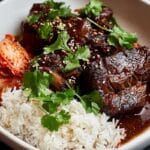
Korean Style Pot Roast
- Prep Time: 20 minutes
- Cook Time: 2 hours
- Total Time: 2 hours 20 minutes
- Yield: 6 servings 1x
- Category: Dinner
Description
Korean Style Pot Roast is a flavorful fusion of tender beef and Korean-inspired ingredients like gochujang, soy sauce, garlic, and ginger. Serve it over rice with kimchi for a bold, comforting meal.
Ingredients
1 (4 to 5‑pound) chuck roast, cut into 3‑inch pieces
1 tbsp kosher salt
1 tbsp vegetable oil
1 sweet onion, thinly sliced
6 garlic cloves, finely chopped
1 tbsp grated fresh ginger
2 tbsp gochujang paste
¼ cup brown sugar
½ cup low-sodium soy sauce or tamari
2 cups beef stock
Cooked rice, for serving
Fresh cilantro, for serving
Kimchi, for serving
Instructions
Oven method:
-
Dry the beef thoroughly with paper towels, then season it evenly with kosher salt.
-
Heat the oil in a large Dutch oven over medium‑high heat. Once the oil is shimmering, working in batches, add the beef and brown all over (about 10 minutes). Transfer the browned meat to a plate.
-
Reduce the heat to medium. Add the onions to the Dutch oven and cook, stirring occasionally, until they begin to soften (about 4 minutes). Add the garlic and ginger and cook, stirring, until fragrant (about 1 minute). If the aromatics begin to brown too quickly, add ¼ cup of the beef stock and use a spatula to scrape up the browned bits. Then stir in the gochujang paste, brown sugar, and soy sauce until combined.
-
Return the beef (and any collected juices) to the Dutch oven. Add the remaining beef stock and bring the mixture to a simmer. Let it reduce slightly (about 5 minutes). Cover the pot and transfer it to the oven. Cook for approximately 2 hours, or until the meat is very tender and shreds easily with a fork.
-
Serve family‑style over cooked rice, topped with fresh cilantro and a side of kimchi.
Slow cooker method:
-
Dry the beef thoroughly with paper towels, then season it evenly with kosher salt. Brown the beef in oil in a Dutch oven (as above) for about 10 minutes, then transfer to the slow cooker.
-
In the Dutch oven, sauté onions (4 minutes) then garlic and ginger (1 minute). Add ¼ cup beef stock to deglaze if needed. Transfer that onion‑garlic‑ginger mixture to the slow cooker. Stir in gochujang, brown sugar, soy sauce, and remaining beef stock.
-
Cover and cook on HIGH for 6 hours or LOW for 8‑9 hours, or until the beef shreds easily.
-
Serve with rice, cilantro, and kimchi.
Instant Pot (pressure cooker) method:
-
Dry the beef thoroughly with paper towels, then season it evenly with kosher salt. Select Sauté mode on the Instant Pot and add oil. Once hot, brown the beef (10‑20 minutes), then transfer to a plate.
-
Add onions to the pot and cook ~4 minutes, then garlic and ginger ~1 minute. Stir in gochujang, brown sugar, soy sauce and beef stock. Return the meat (and any juices) to the pot.
-
Lock the lid, close vent, and Pressure Cook for 1 hour. Allow natural pressure release for 15 minutes, then quick release if needed.
-
Serve as above.
Notes
Use tamari for a gluten-free version. Adjust gochujang to control spice level. This recipe is great for meal prep and leftovers freeze well.
Nutrition
- Serving Size: 1 portion
- Calories: 760 kcal
- Sugar: 10 g
- Carbohydrates: 15 g
- Protein: 103 g

